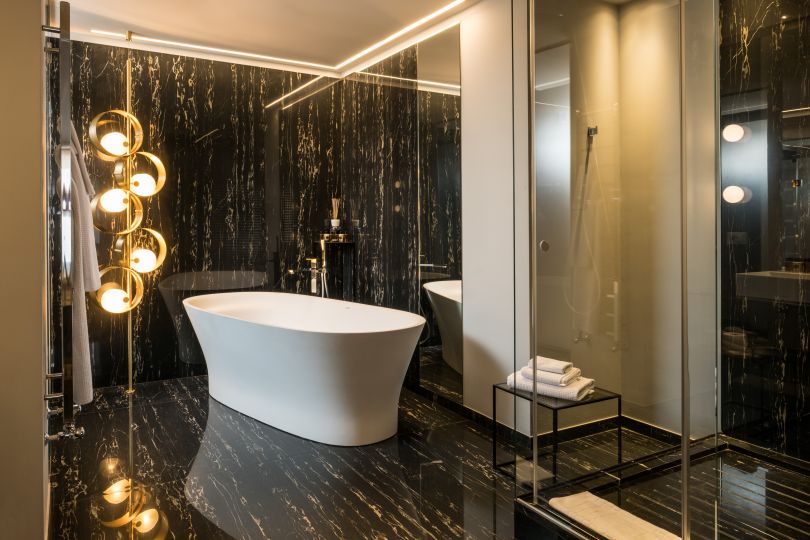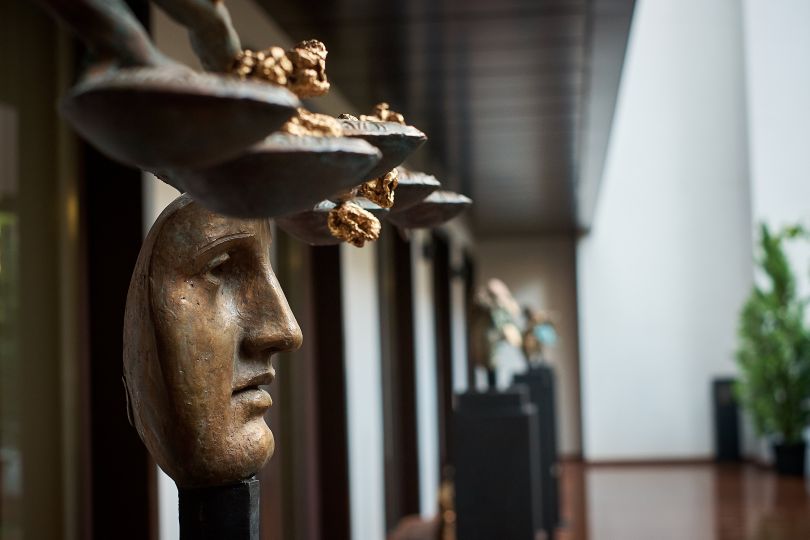Irina Mettus met with Nunzio in Elissa restaurant located in Il Decameron Clubhouse.
What are the most striking trends in design and architecture you can identify? What, in your opinion, caused their appearance?
If we talk about home design, the main trend is creating a home as a haven for memories and creativity. In this sense, the house speaks about those who live in it. Globalization has a huge impact on architecture and design, much like on the whole culture in general - fashion, gastronomy, cinema and the like.
Today, the borders are erased, the characteristics and regional features are leveled - on the one hand. But, at the same time, the values of cultural heritage, both global and country-specific, are becoming increasingly important. Those are the contradictory, but quite bright and clear trends that I observe nowadays.
In your opinion, which country's modern design and architecture are the most progressive today? Does the concept of "progressiveness" always concern the super-modern or, rather, the consonance to the era, a certain moment and situation?
 Of course, actively developing and technologically advanced countries are in the forefront. Technological progress opens up new opportunities and prospects - what was just a fantasy yesterday is a reality today. But the concept of “progressiveness” itself is rather relative, it is appropriate to speak about it only in a specific context. Progressive doesn't necessarily mean that we talk only about cutting-edge technologies; balance and harmony, new sound and a combination of traditional and modern - this is my understanding of “progressiveness”.
Of course, actively developing and technologically advanced countries are in the forefront. Technological progress opens up new opportunities and prospects - what was just a fantasy yesterday is a reality today. But the concept of “progressiveness” itself is rather relative, it is appropriate to speak about it only in a specific context. Progressive doesn't necessarily mean that we talk only about cutting-edge technologies; balance and harmony, new sound and a combination of traditional and modern - this is my understanding of “progressiveness”.
Are you familiar with Ukrainian design? How can it be described? What are the brightest trends you can point out?
In my opinion, Ukrainian design is rapidly evolving due to the increasingly active and accessible cultural exchange. New trends are greatly influenced by new aesthetic and technological design. We have very similar phenomena in Italy too. Is architecture for you a business or an art? Architecture is a noble art form that generates business. It's quite brief, but that's the point.
One of the prominent modern trends is integrating modern architecture into the existing historical context. Your projects are the example. It is quite difficult. How to do it properly? Do you have specific tips or does each case require an individual approach?
 The integration of modernity into the historical context is a very complex issue. From an aesthetic point of view, we can observe the birth of buildings as works of art that are self-sufficient For example, the works by Frank Lloyd Wright, Zaha Hadid, Jean Nouvel and many others. Sometimes this process is eclectic - it changes the sociology of the city, for example, the Guggenheim Museum in Bilbao. From a functional point of view, there is a tendency to create technological containers, one of the examples is the Beaubourg Renzo Piano in Paris.
The integration of modernity into the historical context is a very complex issue. From an aesthetic point of view, we can observe the birth of buildings as works of art that are self-sufficient For example, the works by Frank Lloyd Wright, Zaha Hadid, Jean Nouvel and many others. Sometimes this process is eclectic - it changes the sociology of the city, for example, the Guggenheim Museum in Bilbao. From a functional point of view, there is a tendency to create technological containers, one of the examples is the Beaubourg Renzo Piano in Paris.
Do you think that such architectural eclecticism kills the purity of the style?
In my opinion, purity in art does not exist. Art is the fruit of continuous layering, interpenetration and interaction. And the task of the artist, architect or designer is to find the right balance between them.
Tell us a little about your Odesa project Il Decameron. What is unique about this project? How the very idea of creating the “small Italy” in the historical center of Odesa was born?
 The uniqueness of this project is recreating and improving the idea and role of the inner garden - the classic Italian patio. It is the heart of the entire composition of the complex, the place of meeting of all the basic functional and semantic blocks of Il Decameron. The blocks, in their turn, reflect everything Italy is famous for: hospitality is represented by the hotel, food and wine by the gastronomic restaurant Elissa and Insomnia bar, business by the congress hall and offices for residents of the complex; and art is represented by an art cluster that is now actively developing. The inner garden, by the way, has always been characteristic of the city building of Odesa, founded, by the way, by José de Ribas, who grew up in Naples, Italy.
The uniqueness of this project is recreating and improving the idea and role of the inner garden - the classic Italian patio. It is the heart of the entire composition of the complex, the place of meeting of all the basic functional and semantic blocks of Il Decameron. The blocks, in their turn, reflect everything Italy is famous for: hospitality is represented by the hotel, food and wine by the gastronomic restaurant Elissa and Insomnia bar, business by the congress hall and offices for residents of the complex; and art is represented by an art cluster that is now actively developing. The inner garden, by the way, has always been characteristic of the city building of Odesa, founded, by the way, by José de Ribas, who grew up in Naples, Italy.
What is similar and different about the cultural and historical heritage of Italy and Ukraine with Odesa in particular?
 Odesa, as the largest port on the Black Sea, has always had close relations with the Italian ports. Historically, the city was very much associated with Venice, Genoa, Naples...it borrowed a lot from them, and they, in turn, took a lot from Odesa. This applies to culture in general, art and architecture, gastronomy and the manner of dressing.
Odesa, as the largest port on the Black Sea, has always had close relations with the Italian ports. Historically, the city was very much associated with Venice, Genoa, Naples...it borrowed a lot from them, and they, in turn, took a lot from Odesa. This applies to culture in general, art and architecture, gastronomy and the manner of dressing.
When walking the streets of Odesa, sometimes you catch yourself thinking, or rather, feeling that you are in a classic Mediterranean city, where even the names of the streets remind you of Italy. The differences are mainly due to historical events of the last century, which also affected architecture and design.
Translation by Kate Pryliuk.
Photos provided by Il Decameron.








